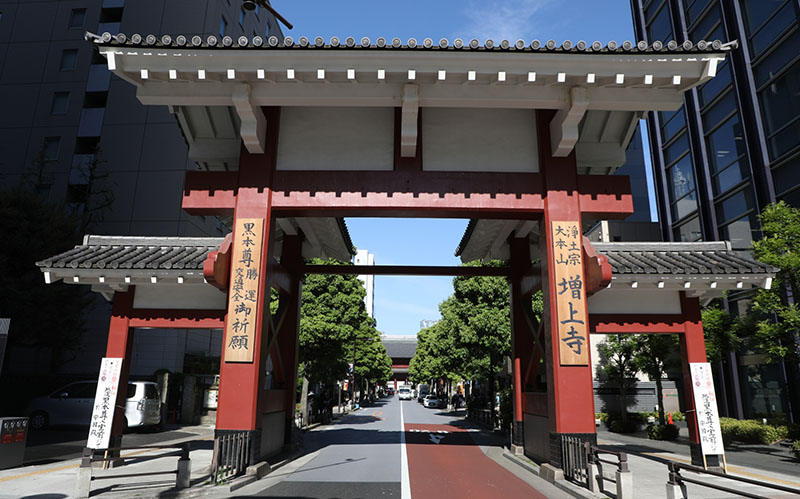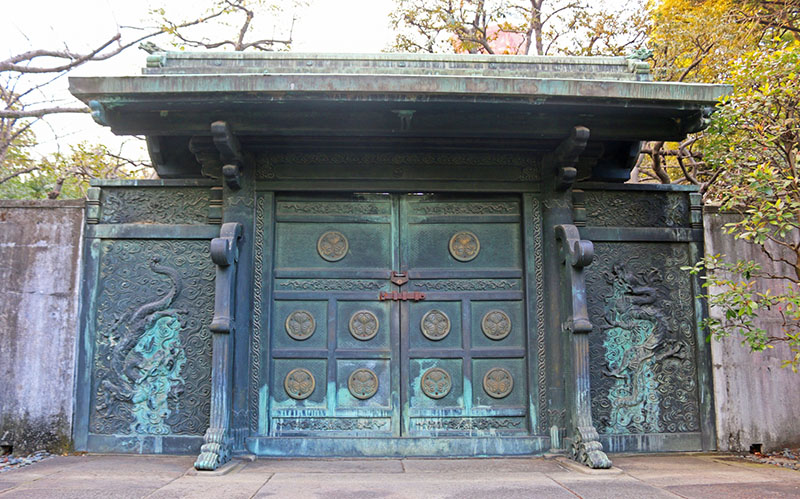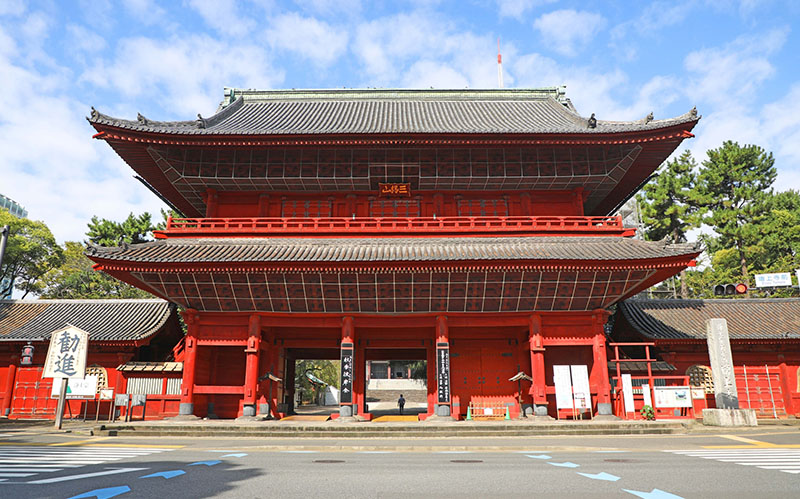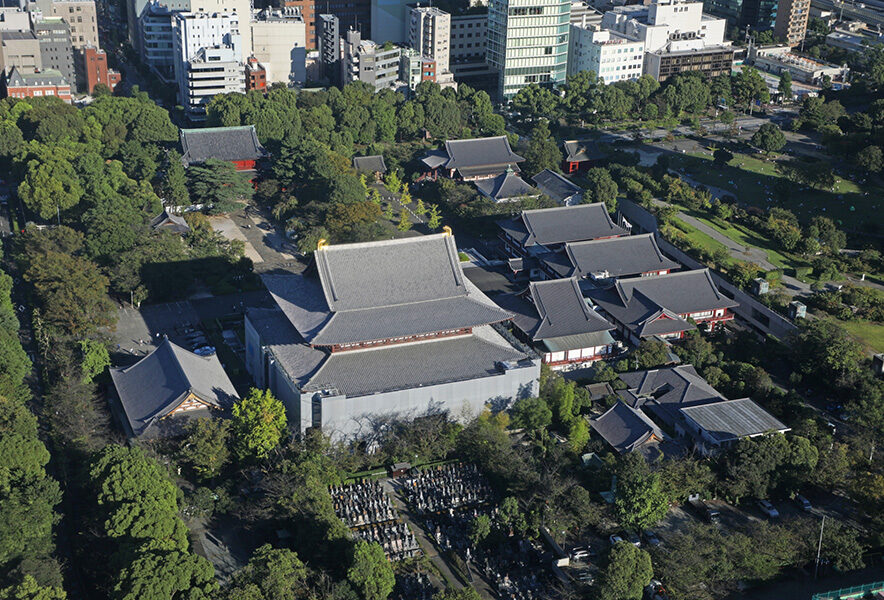- What kind of temple is “Zojoji temple”? One of the seven head temples of the Jodo sect
- Zojoji Temple” became a family temple of the Tokugawa family! Cemetery of the Tokugawa Shoguns in the precincts of the temple
- Some of the few buildings on the grounds have survived the war.
- Access to Zojoji Temple
- Parking around Zojoji Temple
- Zojoji Temple Official Website
- Recommended around Zojoji Temple
What kind of temple is “Zojoji temple”? One of the seven head temples of the Jodo sect
Zojoji Temple is a Jodo sect temple located in Shiba Koen, Minato-ku, Tokyo.
The temple was originally a Shingon sect temple called Komyoji Temple (built in the 9th century by Soei, a disciple of Kukai) in Kojimachi Kioicho, Chiyoda-ku, Tokyo. In 1393, Shoso, the eighth founder of the Pure Land sect, converted the temple from Shingon to Pure Land and changed the temple name to Zojoji.
Since then, Zojoji has developed as one of the seven head temples of the Jodo sect.
The seven major head temples of the Jodo Sect are Zojoji, Konkai Komyoji, Hyakumanben Chion-in, Seinkai-in, Zendoji, Komyoji, and Zenkoji Daihonkan, with Chion-in as the head temple above these seven major head temples.

Zojoji Temple” became a family temple of the Tokugawa family! Cemetery of the Tokugawa Shoguns in the precincts of the temple
Zojoji Temple has been closely associated with the Matsudaira and Tokugawa clans since the Middle Ages, and became a family temple of the Tokugawa family in 1590.
It is not clear how the temple became a family temple, but it is said that Tokugawa Ieyasu, who entered the Kanto region in the same year, happened to pass by Zojoji Temple and became friends with Jisho, the abbot of the temple at the time.
In 1598, Tokugawa Ieyasu moved the temple to its current location, Shiba.
Shiba is the unlucky back gate of Edo Castle, and it is said that the purpose of moving Zojoji Temple here was to prevent good fortune in Edo (the unlucky gate is Kan’eiji Temple in Ueno).
In the Edo period (1603-1868), Zojoji Temple became the first of the eighteen Kanto Danrin temples as well as a Danrin (academy or training school).
The Kanto 18 Danrin refers to the 18 dandanrin temples of the Jodo sect in the Kanto region, which were established in the early Edo period.
In addition, there is a cemetery for the Tokugawa shoguns, where six of the 15 shoguns (Hidetada, Ienobu, Ietsugu, Ieshige, Iekei, and Iemochi) are buried, as well as Sogen-in (Hidetada’s wife) and Kazumiya (Iemochi’s wife).

Some of the few buildings on the grounds have survived the war.
Many of the buildings at Zojoji Temple existed until the Edo period (1603-1868), but many were lost during the air raids of the Pacific War and the downsizing of the temple due to the separation of Shintoism and Buddhism during the Meiji Restoration (1868-1912).
However, one structure survived the war and remains to this day.
It is the “Sankaishimon” gate. This gate was built in 1622 and is the only structure that retains the appearance of the early Edo period, and is designated as a national important cultural property.
The name “Sankakkoudemon” means “gate for liberation from the three worldly desires” (greed, anger, and stupidity).
Many of the other buildings were rebuilt after the war, but they are all worth seeing.
The main hall, “Daiten,” was rebuilt in 1974 and is one of the largest halls in the Tokyo metropolitan area. Tokyo Tower can be seen in the background.
The Ankoku-den Hall houses a secret statue of Buddha called Kurohonzon. The Kurohonzon was originally a standing golden statue, but it is said to have darkened over the years due to the smoke from the incense.
The statue, which is said to have been worshipped by Tokugawa Ieyasu, is opened only on January 15, May 15, and September 15.

Access to Zojoji Temple
4-7-35 Shibakoen Minato-ku, Tokyo 105-0011
Parking around Zojoji Temple
Zojoji Temple Official Website
Official site:https://www.zojoji.or.jp/en/
